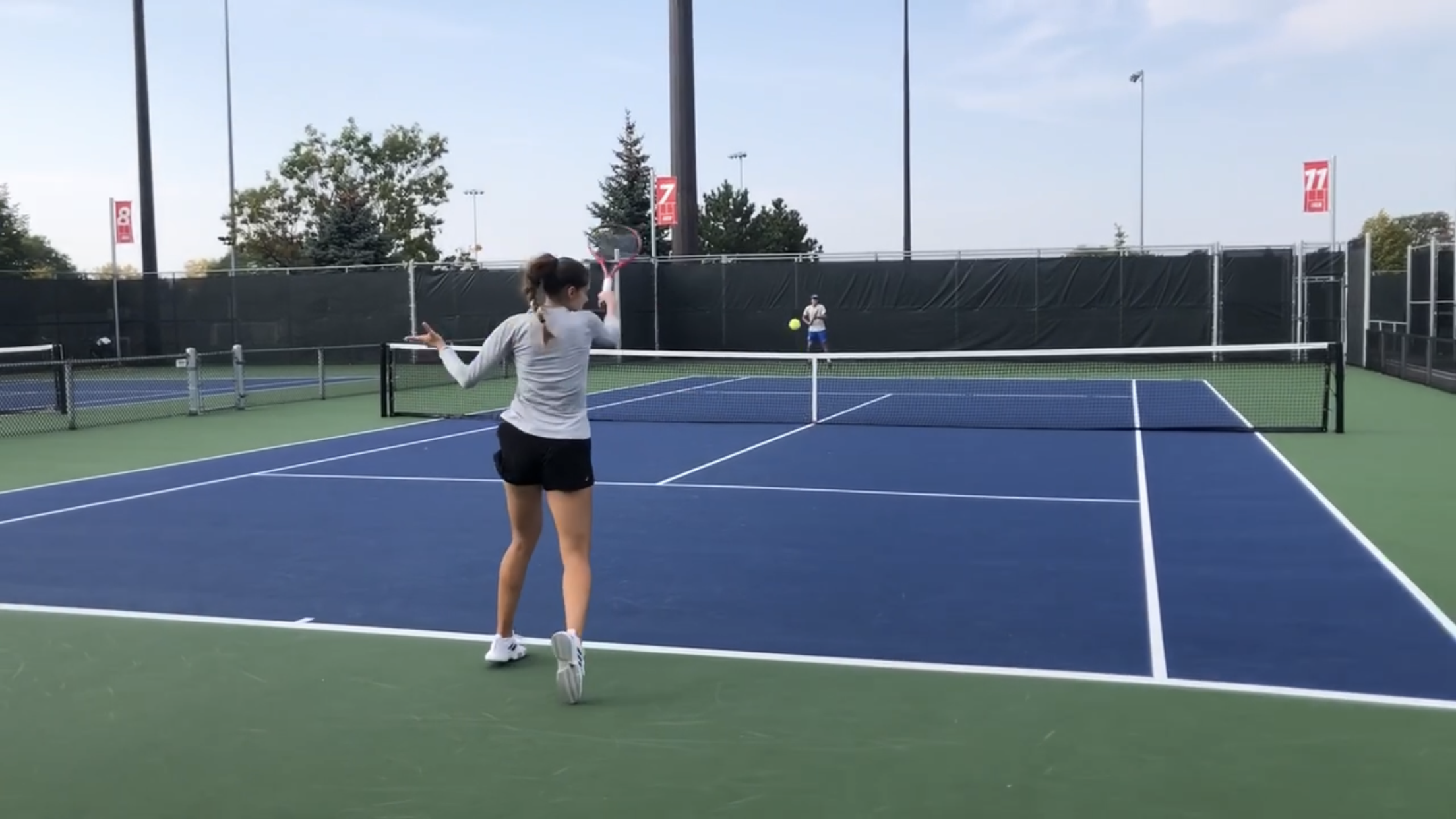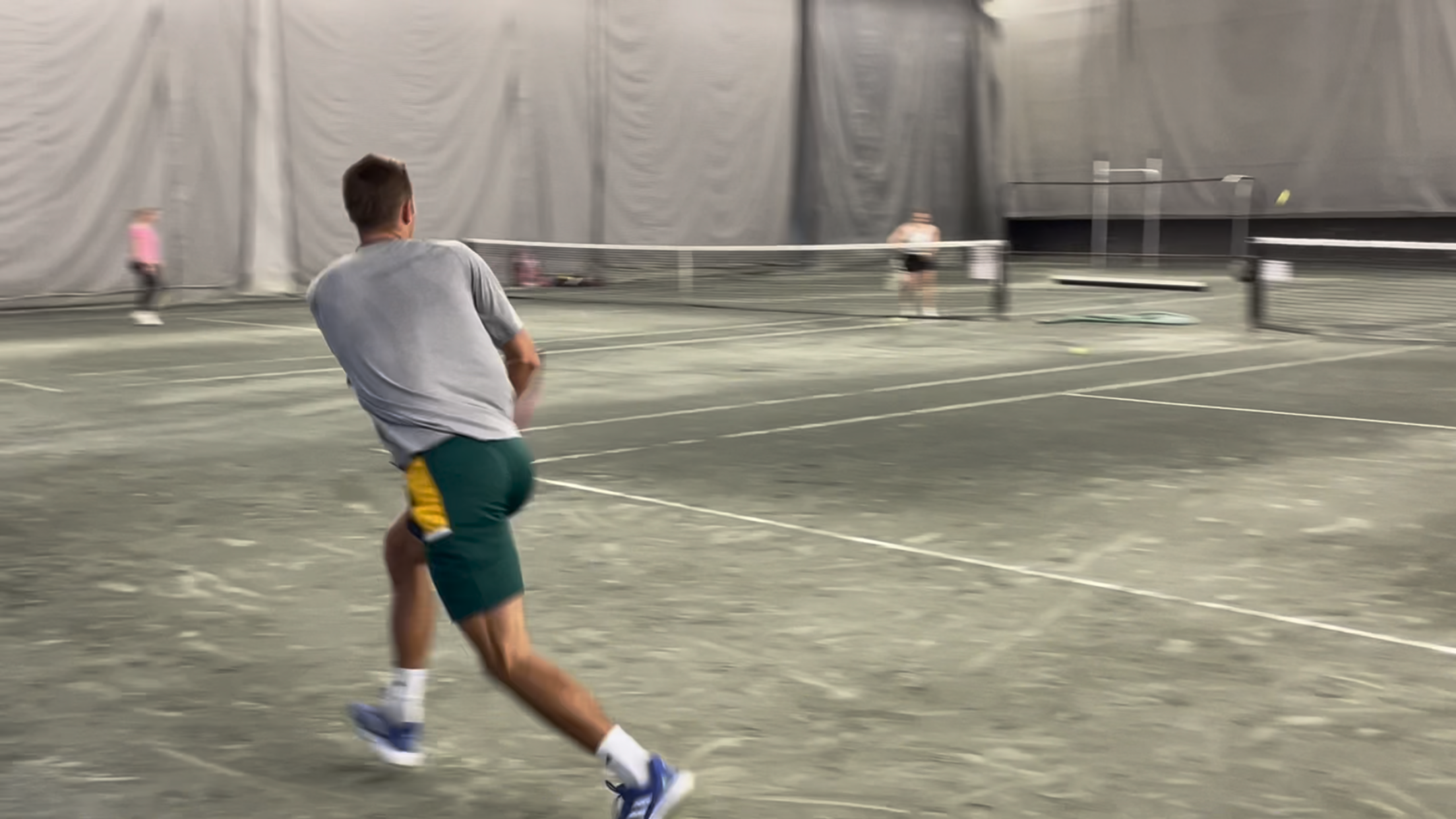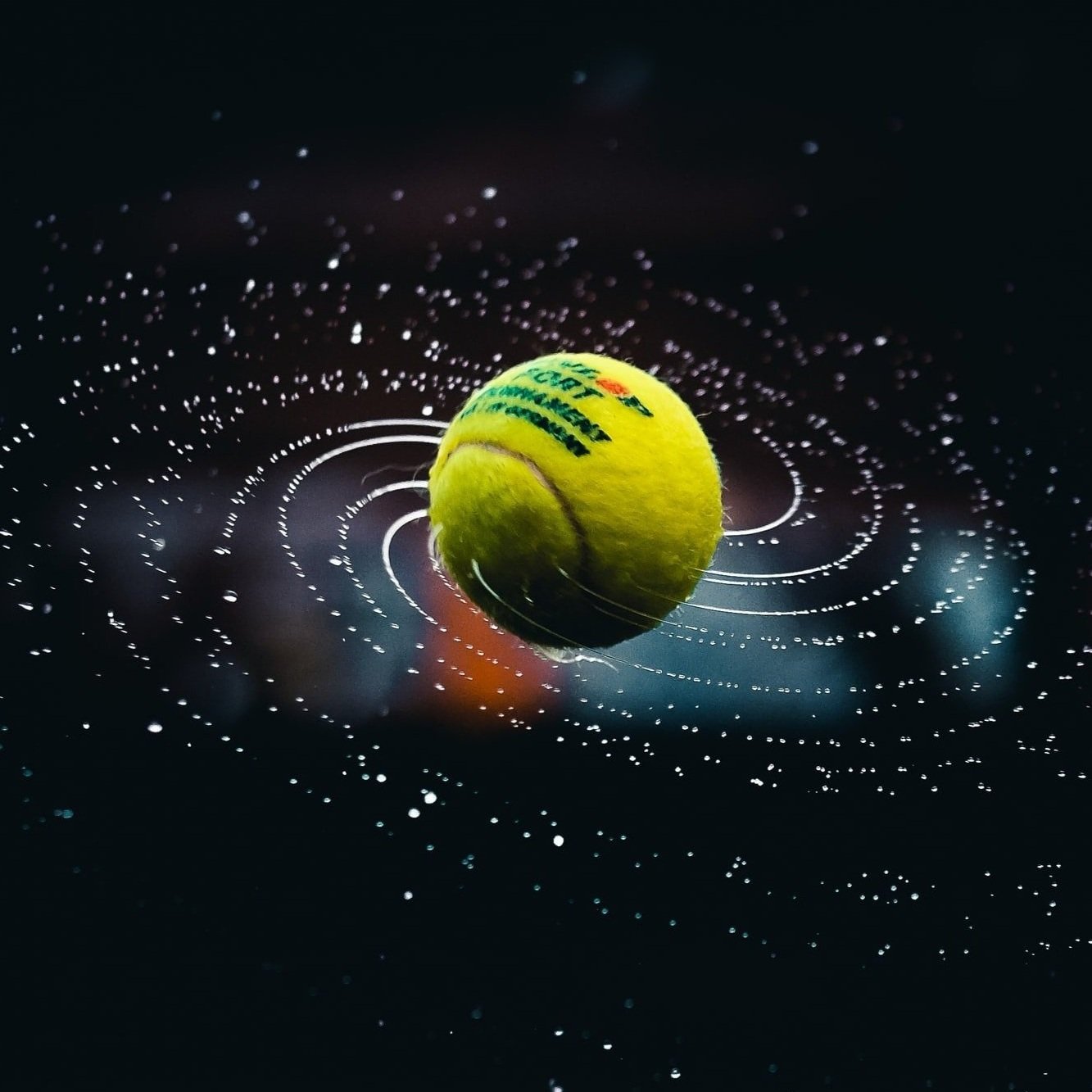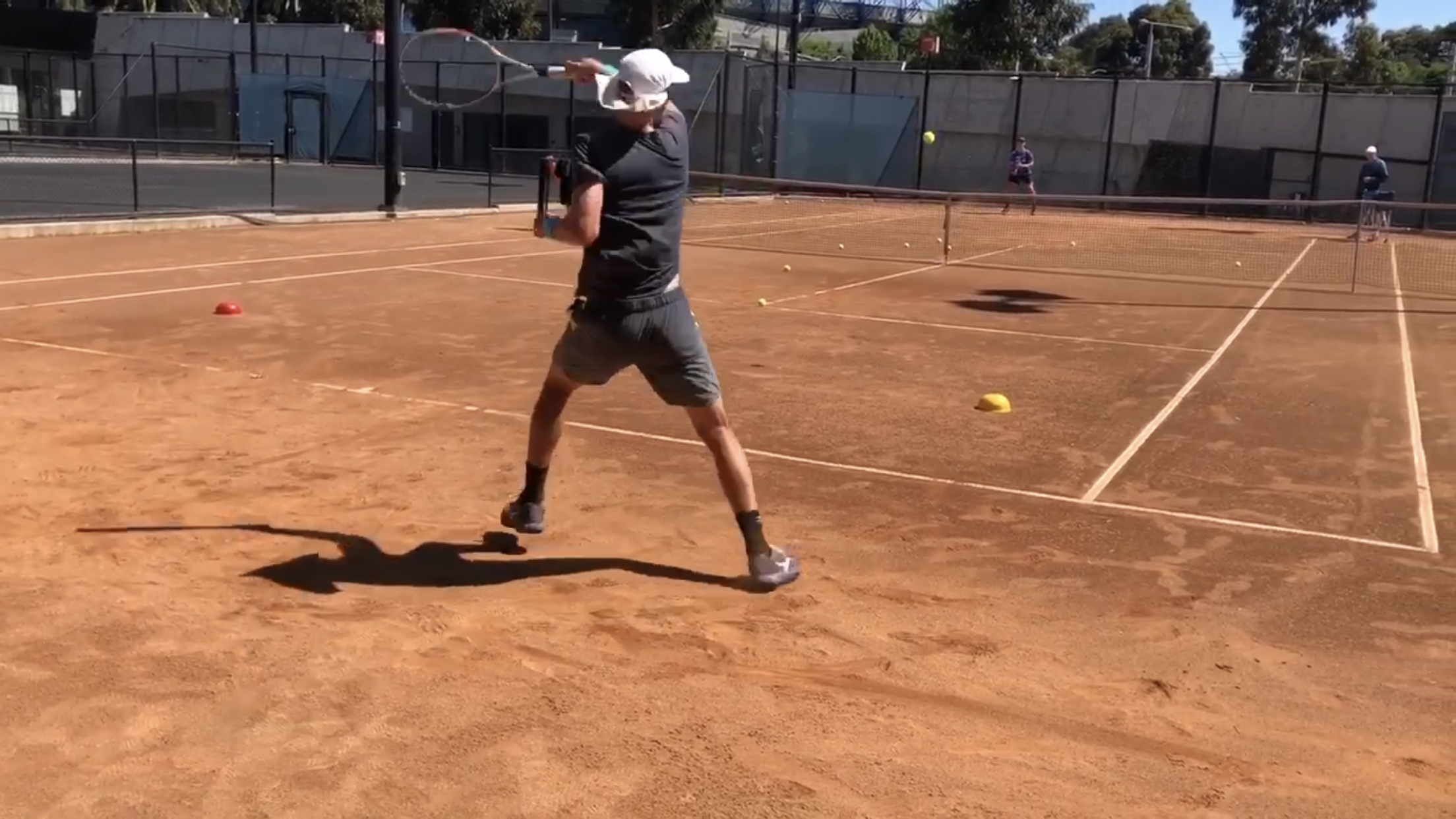There are no shortages of training videos these days. Just open your Instagram or Facebook app and within seconds you’ll be inundated with more drills than you know what to do with.
The question is, will these drills help your tennis?
Before we answer that question, I want to make clear that tennis drills lie on a spectrum. We have drills that are more open skill (like game-based options) all the way to drills that are more closed skill (like basket and/or hand-feeding).
Based on my own playing and coaching experience (along with the research on motor learning), I have a personal preference towards drills that lie more towards the ‘open’ end of the spectrum. Live-ball, real-time, back and forth playing situations.
That’s not to say that drills that are more ‘closed’ don’t have their place and aren’t important. It’s just that - from my viewpoint - they are too often the first option for most players and coaches when aiming to improve their tennis.
A ‘Closed’ Drill Example
To illustrate the ‘closed’ end of the drill continuum, let’s use an inside-out forehand drill as an example.
The difference between an inside-out forehand vs an inside-in forehand (for a right-handed player).
In this drill, let’s say that a coach is hand-feeding a series of balls and asks the player to move around their backhand, to execute the desired shot (i.e. hit the forehand inside-out to the opposite corner).
You can imagine the repetitive nature of the drill. The ball is hand-fed into the same location, over and over.
Now, we can make the drill even more closed (or put another way, less realistic) by positioning cones in a circle, and asking the player to move around those cones on every shot.
Likewise, we can make the drill more open (more realistic) by varying the type of ball we feed - some lower, some higher, some further out wide, and so on.
Again, I’m not saying that this type of drill is inherently bad. What I am saying - what I’ll argue in this article - is that in many cases, you DO NOT need to use these types of drills to improve your tennis. And more importantly, that the drill itself SHOULD NOT be the focal point.
Did I just blow your mind or what?! At this point, you might be wondering, “Matt, you’re crazy, how can I get better if I don’t perform basket or hand-fed drills”?
The answer - use CUE words.
Whether you’re a tennis player or a coach, you too can use cue words (and their close relative, command words) to improve very specific aspects of your game (or that of your students). We’ll outline how to use them, when to use them and how effective they can be in improving tennis abilities.
We’ll also use examples along the way - which I urge you to try on the practice court. Let’s get to it.
Cue and Command Words Defined
Cues, in the traditional sense of the word, are often given by coaches to players with the aim of improving some feature of their performance. Whether that be mechanics or footwork - when a coach provides a cue, I would consider that an external input.
But the player must internalize this cue. And in the best case scenario, this cue should be repeated, in some form, while a player is engaged in the action itself.
That’s where cue/command words come into play. Players can use them to internalize a specific action, forming a habit along the way.
Cue Words
In this context then, cue words are essentially ‘trigger words’ that mark the beginning of a movement and/or skill.
In tennis, we primarily use them when a player is receiving the ball - i.e. the ball is coming towards their side of the court. They are particularly useful for identification purposes - i.e. am I receiving a forehand or a backhand? Is the oncoming ball hit with topspin or backspin? And so on.
Here’s the thing - a big part of tennis (perhaps the biggest), has to do with perceiving the oncoming ball, right? In other words, we’re judging the ball as it’s coming off our opponent’s strings. In particular, we need to judge the depth of the ball - where is it going to land, short in the court or deep?
Depending on where it lands, we’ll have to make the necessary adjustment steps forward or backward - in order to receive the ball well. Otherwise, we likely won’t be in a very good position to strike the ball with any sort of power or control.
A go-to drill of ours is to simply work on these perception skills by asking players to use one of 2 cue words, UP or BACK.
The primary aim is to call one of these cue words as soon as they know what decision needs to be made. If the ball is going to land short (compared to where they are positioned), they will have to say UP (either out loud or in their head) and initiate said movement. If the opposite occurs, and the ball lands deep in the court, the player will have to say the word BACK and initiate that movement.
If you work with a variety of students, you’ll notice that less experienced players don’t judge the ball very well and often make their movement towards the ball right before it’s about to hit the ground - at that point, however, it’s simply too late...they will inevitably be rushed to execute their swing.
Elite players, on the other hand, have a lot of experience judging the oncoming ball and it’s not uncommon for them to begin moving as soon as the ball leaves their opponents strings (visual scanning, anticipation and pattern recognition also play a big role here, but we’ll save those topics for another day).
Command Words
While cue words help to identify characteristics of the oncoming ball - which inevitably, allows us to react with the appropriate response - command words are more concerned with projection skills. In other words, what a player should do during the execution portion of their shots.
Here’s an example - imagine you’re at the net for a moment and your opponent has hit the ball towards you. Two primary scenarios will emerge - either the ball is coming at you above the level of the net OR the ball is coming at you but dipping low at your feet (i.e. below the level of the net).
It should be obvious that the same technique cannot be used for each of these scenarios. To practice this, we can have 1 player hitting volleys and 1 player hitting groundstrokes (this is a perfect example of a ‘live ball’ drill). We could then ask the groundstroke player to mix up their shots, hitting some low, some high, with more spin or less.
Now, instead of just volleying with no clear purpose, we could provide 2 command words for the player at net - one that will help ‘trigger’ a specific action when the ball is low (at their feet) and one that will ‘trigger’ an action when the ball is higher (above the level of the net).
We often use the following commands:
Catch - The ball is below the level of the net and we want the player to have more feel on this shot because they aren’t in an offensive position. This ‘catching’ action accurately depicts the feeling we want. The result is often a drop volley or a controlled volley into the desired location of the court.
Punch - The ball is above the level of the net. In this case, we might want to add some pace to the ball and/or be a little more aggressive. I mean, it’s above the height of the net (and we’re at net), why wouldn’t we want that?
Adding Another Dimension
Now let’s say that we add another dimension to this scenario and I ask the groundstroke player to - on occasion - add some pace to the ball. If the player at the baseline has done his/her job well, the ball will be above the height of the net when the volleyer is meeting it.
Assuming we now have multiple scenarios at play, I might add a 3rd command word for the volleyer to select from - ‘block’. The 3 scenarios are as follows:
Ball dipping low - ‘catch’ (or ‘drop’ or ‘touch’ - see vid below)
Ball coming at a controlled pace, above net level - ‘punch’.
Ball is coming at a fast pace, above net level - ‘block’.
All in all, cue and command words are great because coaches can use them to help guide players to perform certain skills in a certain way (without forcing them to do it exactly this way or that way). And the more often they use these types of trigger words, the more habitual (or automatic) their actions become.
Final Thoughts on Trigger Words (and Drills)
If you read closely, you might have realized that a grey area exists when it comes to cue and command words.
In our volley example, the command word can kind of act as a cue word too. Because I am essentially identifying whether the ball is low or high AND THEN I’m executing the appropriate shot.
Irrespective of that, cue and command words are powerful as they not only help work on perception (where’s the ball going to land), decision making (is my opponent attacking, defending etc) but technique too!
For instance, a player might use a command word like drive to depict the feeling they want on a shoulder-level attacking shot. Will that command word not correspond with the appropriate technique? It should.
But in some cases, the player isn’t executing the shot well, despite an appropriate command word. That’s when we can intervene in a number of ways - including the use of a very specific, closed-off drill.
Before going there, I might ask myself questions like:
Is this player making the right decision? Perhaps they’re saying ‘drive’ but the ball isn’t at shoulder height?
If their decision making is appropriate, can the player execute this shot (using a command) at a slower pace? Perhaps during an exchange with a partner, and not a real-live point?
If not, what about if I fed the ball to them, using my racquet?
Still no? Now it’s time we regress even further and see if they can do it without a ball (shadow) and/or while I hand-feed it etc.
Those final details are just that, details. Experienced coaches will find a way to regress the skill to the right point, making it challenging enough (but not too much so), in order for the student to struggle a bit, but still succeed.
The key however, is to use cues to get the correct feeling - whether you’re performing a live-ball drill or a hand-fed drill.
The reality is, many go straight to drills and forget that tennis is a mix of reception and projection…of identifying the oncoming ball and executing the swing…of knowing where to move and which shot to hit once we’re there.
Drills should therefore be seen as tools. Tools that are used at very specific times, to help improve a very specific quality.
Because in the end, it’s the cue we need to focus on, NOT the drill.
If you want to learn more about cues, commands and learning, check out my flagship course - Beyond the Swing! It’s 25% OFF (discount automatically applied at checkout).
THIS IS NOT YOUR TYPICAL INSTRUCTIONAL TENNIS SITE.
SUBSCRIBE FOR ARTICLES, INSIGHTS, PROMOS AND MORE. IT’S FREE.
No spam, ever - we promise.





